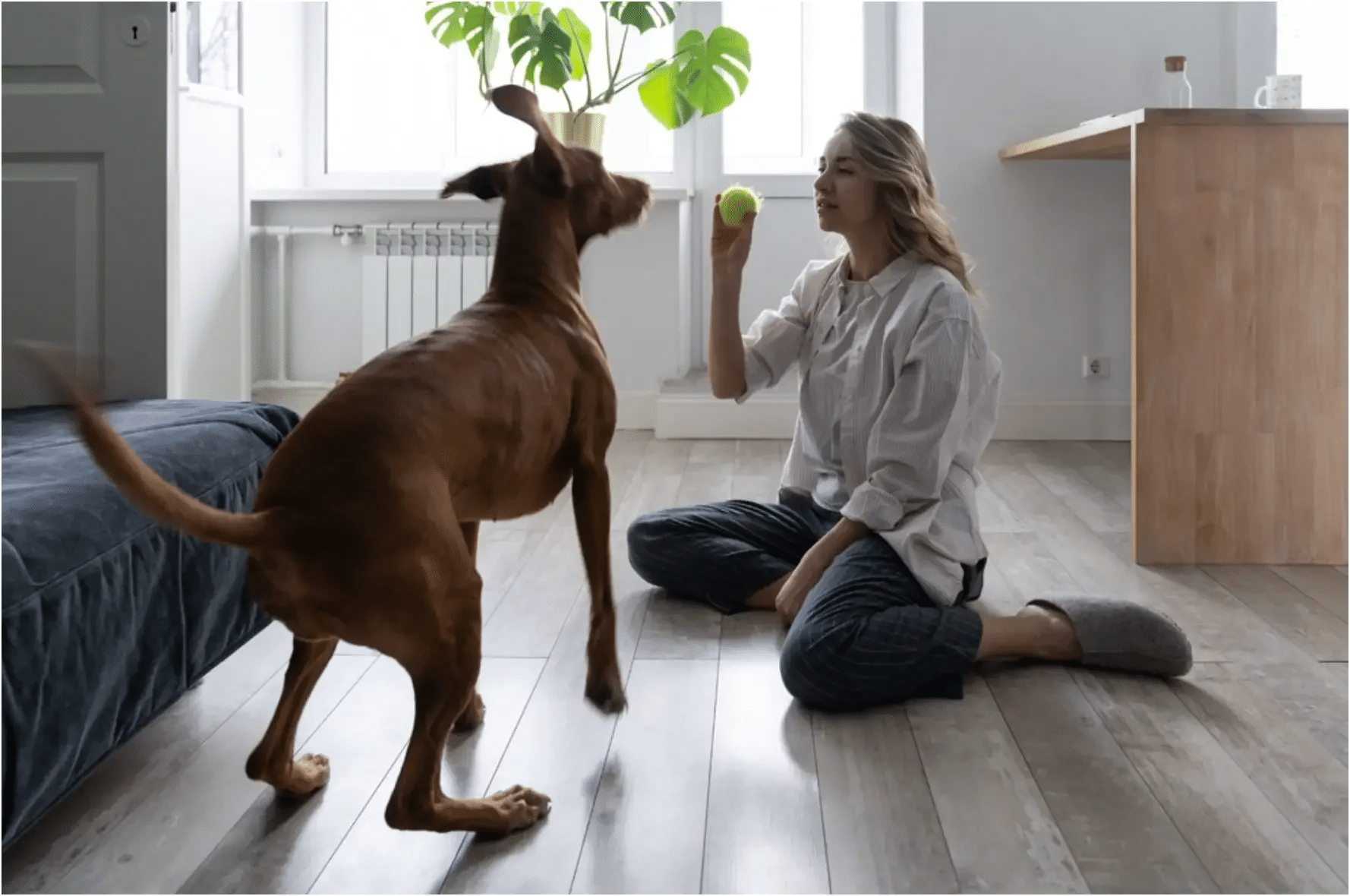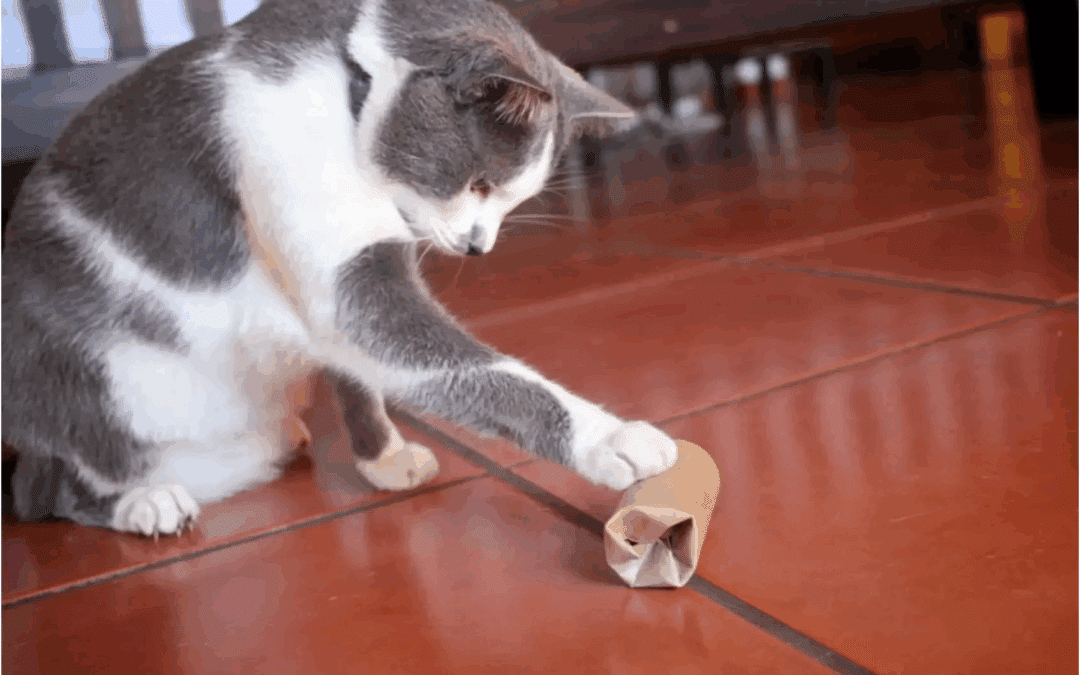4 DIY Enrichment Toys for Cats and Dogs
Like people, pets can get bored, anxious, and depressed when they lack mental stimulation. Pets need enrichment opportunities to stimulate their senses, express instinctual behaviors, and stay mentally and physically sharp. Without adequate enrichment, your pet may develop behavioral problems such as destruction, excessive vocalization, inappropriate elimination, overgrooming, irritability, and more. Fortunately, you can easily incorporate mental enrichment into your pet’s life. While you could purchase enrichment toys for your pet, you don’t need to spend an arm and a leg on trendy pet toys. Do-it-yourself (DIY) enrichment toys are equally effective and can be made from items you likely already have around the house. To help engage your pet’s body and brain, check out our Village Veterinary Animal Hospital team’s list of four DIY toys that you can easily make at home.
DIY pet enrichment toy #1: Fascinating feather wand
Although your cat is domesticated, they continue to share their wild counterparts’ instincts. To help your cat express their natural hunting instincts and encourage them to stalk and pounce on fluttering prey, put together this easy-to-make felt feather wand toy:
- Species: Cat
- Materials and assembly: A 30-inch length wooden dowel, felt, leather cording, scissors, glue stick, and glue gun.
- Cut and glue the cording — Cut cording to 40 inches, spread hot glue around the top inch of the dowel, and wrap a couple of inches of the cording around the dowel’s glued end. The remaining length of the leather cord will hang from the dowel’s tip.
- Cut felt strips — Cut the felt into 15 half-inch-wide strips that are 12 inches in length.
- Fold felt strips — Fold each strip in half and cut a tiny hole in the middle. Thread each strip onto the leather cording, fanning them out as you attach them.
- Tie a knot — Tie a double knot at the end of the leather cording. Your cat’s wand is complete.
DIY pet enrichment toy #2: At-home agility course
Building a DIY agility course may seem too difficult, but you may be surprised how easily you can pull together a challenging canine circuit. Whether you’re getting serious about agility competitions or just want to introduce your pooch to a new fun activity, this DIY agility course project is a good way to begin. This course encourages your dog to get moving, and they will have a blast while exercising their brain:
- Species: Dog
- Materials and assembly: According to the American Kennel Club, agility courses have between 14 and 20 obstacles, but you can adjust the number based on your dog’s fitness level and experience. If your pooch is new to agility, introduce them to basic obstacles such as:
- Buckets and broomsticks — Balance a broomstick across two buckets to create a simple jumping hurdle.
- Cardboard boxes — Cut off a large cardboard box’s ends to make a tunnel for your pet to crawl through.
- Blankets and chairs — Another tunnel option is to drape a blanket over two kitchen chairs, leaving space for your pet to run underneath.
- Garden stakes — Put garden stakes in the ground in a straight line, spacing each stake about two feet apart. To protect your pet from a paw injury, cover the stakes with polyvinyl chloride (PVC) pipe. Use a high-value treat to encourage your dog to weave in and out of the garden stakes.
DIY pet enrichment toy #3: Tennis ball treat puzzle
You can make this tennis ball food puzzle in minutes. To put your dog’s problem-solving abilities to the test, offer them this highly interactive toy:
- Species: Dog
- Materials and assembly: Carefully make an incision along a tennis ball’s seam, and stuff the ball with kibble or treats. Toss the ball to your dog, and see if they can get the treats out.
DIY pet enrichment toy #4: Plastic bottle puzzle cat feeder

Your cat may be domesticated, but they still enjoy hunting for their food. This simple puzzle feeder requires your cat to work for their meal.
- Species: Cat
- Materials and assembly: Using scissors, cut multiple holes in a plastic water bottle’s sides, ensuring that the holes are larger than your cat’s kibble or treats. Pour the food through the bottle’s opening and replace the cap. You’ve got yourself a cat puzzle feeder! Watch as your cat bats around the bottle, and triumphantly gobbles up the treats that fall from the holes. Once your cat figures out this feeder, you can create more challenging versions by cutting fewer and smaller holes, making your cat work harder to get their treats.
With a little creativity and a few everyday household items, you can craft DIY enrichment toys your pet will love. In addition to enrichment, preventive care is the best way to help ensure your pet has a long, happy life. Schedule your pet’s wellness exam with our Village Veterinary Hospital team.

